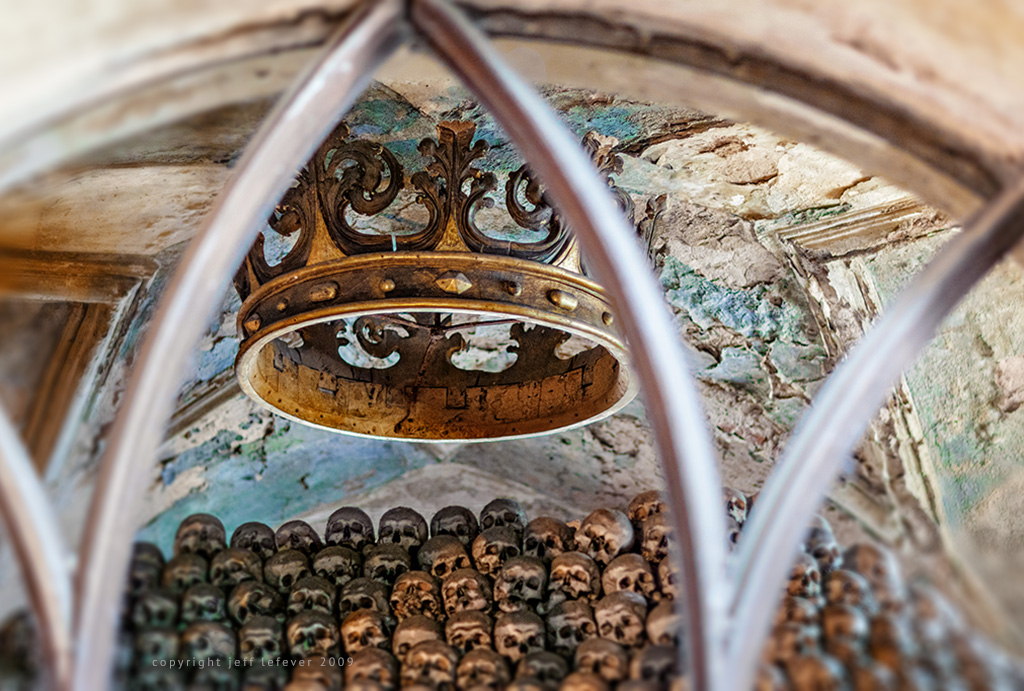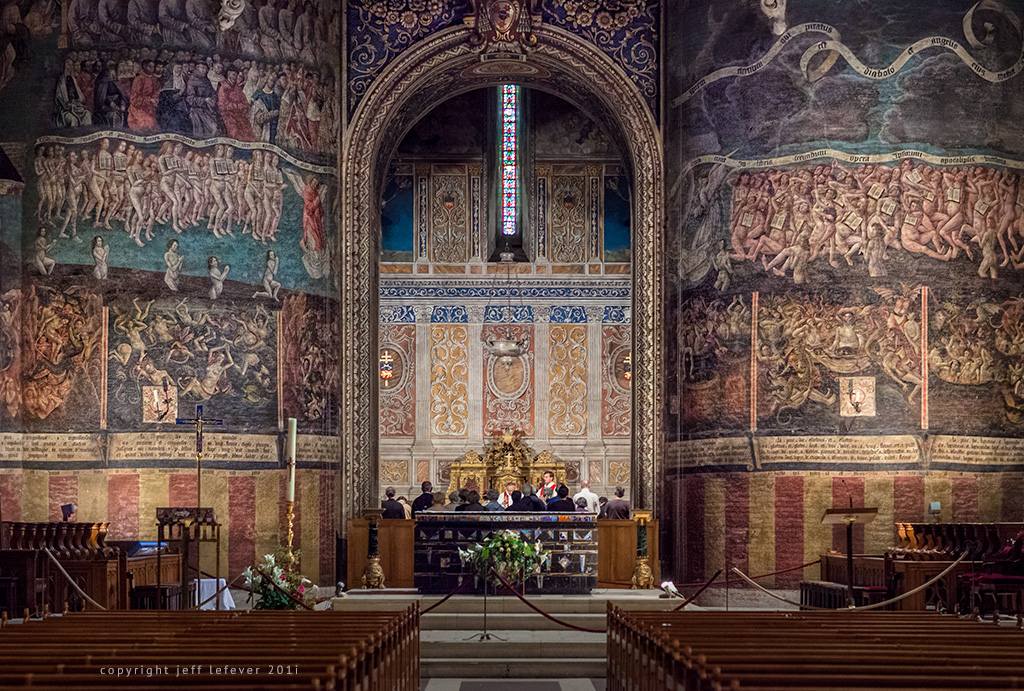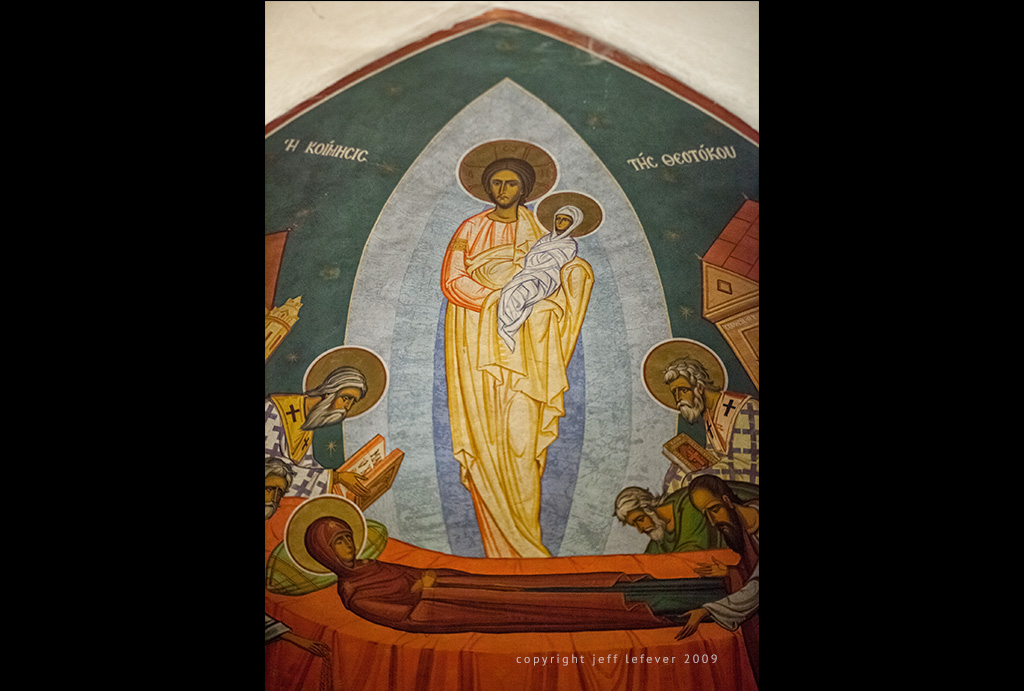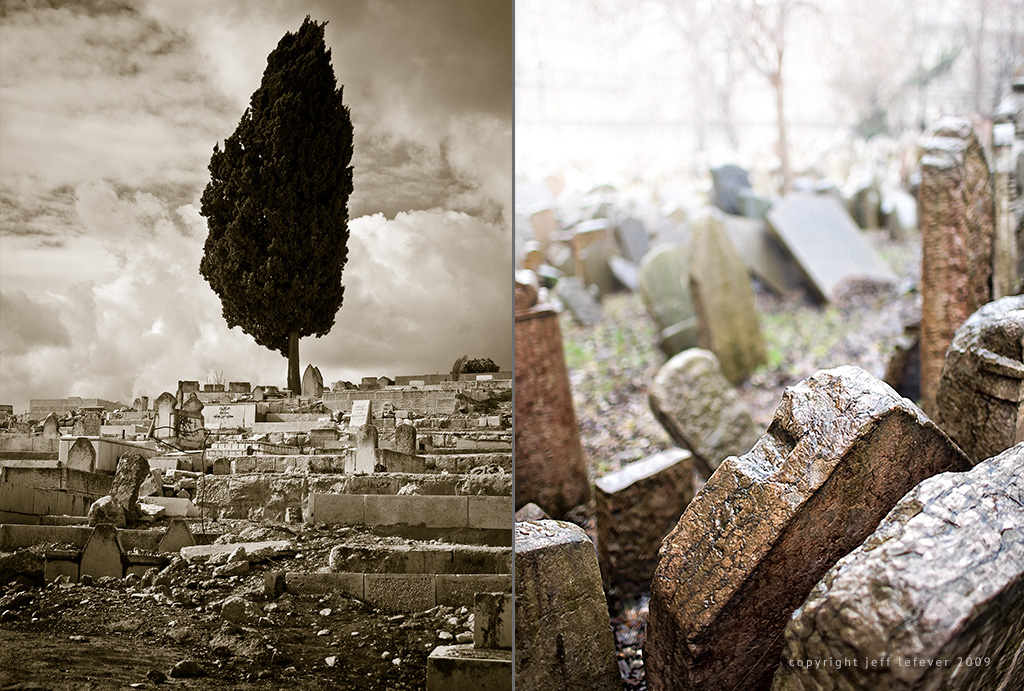The churches of Prague are different than Paris. In Prague (and most of the Czech Republic), the style is predominantly Baroque, opposed to Paris’ Gothic flair, which started with Abbot Suger at his hybrid church, St. Denis. The Gothic style spread throughout France and eventually was adopted elsewhere in Europe, evolving into what was called International Gothic. The Italian style replaced Gothic as the fashion, and eventually, the zealously decorative Baroque was the rage.
Where France tended to be a bit more elegant, the churches of the Czech Republic seemed more aware of the physical and material aspects of Christian thought. Congregants’ culpability to the crucifix peaks here.
The crucifixion is painted and sculpted everywhere – and not always with graceful Messiah This is a battered Jesus, His flesh and blood more obvious, His body palpable and soft, His suffering considerable.
That’s not to say there’s no variety. The older churches reflect different fashions of the time. St. Vitus in Prague, St. Vaclav in Olomouc, St. Barbara in Kutna Hora, Sts. Peter and Paul in both Prague and Brno are all Gothic (or neo-Gothic in the case of Brno, remodel from a Romanesque origin). These were also the cathedrals and the royal churches of the kings or regents of the area.
But death is not hidden away in Czech. The reminder of it is always present.
Being alone in Czech in winter, I was reminded of this in subtle ways, from the hardship carved in the faces of the elderly, to the quality of the thick gray air and muddled light, to the rain filtering through leafless trees and splattering the cold stone, to the plague of graffiti, to the unrelenting smokers.
So many buildings in disrepair, the economic times, my empty pockets…
In Sedlec, Kutna Hora – All Saints Church – is the “Bone Church.” The very small sanctuary is filled with the dead, decorated within with bones exhumed from the cemetery grounds without. Death is present, and a tourist attraction.
The bones were removed from the ground to make room for victims of the Plague and were arranged in 1511 by a half-blind Cistercian monk within the ossuary of All Saints Church. In two piles, skulls of the dead rest beneath large crowns that hang from aged blue vaulted ceilings, a promise of heavenly freedom.
Other bones were meticulously arranged in 1870 by a wood carver and form a macabre replication of Catholic liturgical objects, royal coats of arms, a chandelier… all in all, an estimated 40,000 dead are crafted into an experience in which to contemplate the mystery of our lives.
The mystery of our deaths.
~JWL
“ ‘ONLY MYSTERY enables us to live,’ Lorca wrote at the bottom of one of his drawings he did in Buenos Aires: ‘only mystery.’ “
~ Edward Hirsch, quoting the poet Lorca, from his book The Demon and the Angel (searching for the source of artistic inspiration)



